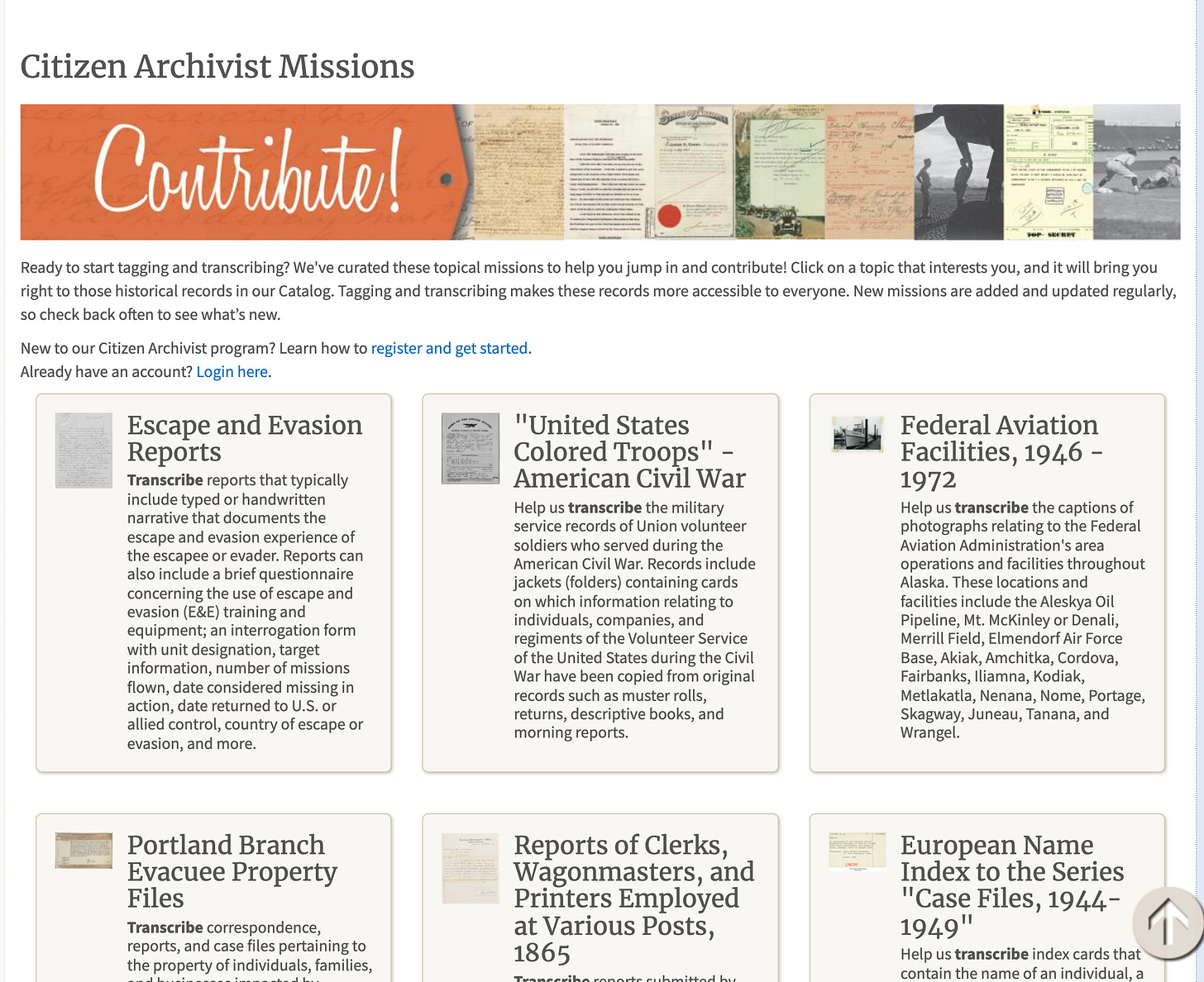In Civics this Week: NARA and the January 6th Select Committee Records Requests
On Thursday, January 20th, 2022, the National Archives and Records Administration (NARA) released over 700 pages of Trump administration records requested by the January 6th Select Committee as a part of their investigation into last year’s attacks on the Capitol. The Committee first requested these in August of 2021 via the Presidential Records Act. The act’s provisions allows Congress, courts, and subsequent administrations to obtain Presidential records - which transfer to NARA’s custody when a President leaves office - that are not yet publicly accessible.
Former President Donald Trump attempted to challenge the request for privileged records, but on January 19th, the Supreme Court denied his request to block NARA’s release of the records to the Committee.1 NARA released the records the next day. (You can read communications between the Committee, Trump, and Archivist of the United States David S. Ferriero here.) Since the release, two documents have been reported on, including a never-issued Executive Order.2
The attention drawn to NARA over the past several weeks serves as an important reminder to the American people: our nation’s records are essential to keeping us informed about government activities. We need them to learn about our country and hold our leaders accountable.
As the keeper of federal, congressional, and presidential records, NARA provides the essential service of facilitating access to high-value records that document our rights as citizens and the actions our government takes. To give you an idea of the scope, NARA holds approximately 13.28 billion pages of textual records, which doesn’t even account for other materials such as photographs, film, video, and electronic data (read more here).
Some NARA records are restricted, like those requested by the House Select Committee. This can be due to national security concerns or other FOIA exemptions. Some high-profile records are eventually declassified, such as the JKF Assassination Records. Under the Presidential Records Act, the public cannot access Presidential records through FOIA requests until five years after the President leaves office (this is why the public cannot currently access Trump’s records).
Millions of other records are completely open to public access. However, the fact that a record is public doesn’t mean that it has reached peak accessibility. To be discoverable to a bigger audience, it is also helpful for the original material to be digitized. Ideally, the records that describe the original material are also searchable online. Caring for these materials and records is a massive undertaking for NARA archivists and other employees. The NARA website notes that their holdings outnumber staff “by millions to one”. Saying that they need a little help would probably be an understatement!
Is there any way that we can contribute to this effort to make NARA government records and material more accessible to the public, you might ask?
Yes, indeed there is.
Become a Citizen Archivist!
NARA’s Citizen Archivist program offers fantastic opportunities to increase online access to national records from the comfort of your own home. Citizen Archivists don’t work with records that require a security clearance or are restricted, of course - but there are plenty of interesting collections open to public access that could use your help. Citizen Archivists help transcribe and tag these records to increase their accessibility and searchability.3
Why is tagging and transcribing important work? When you transcribe or tag a record, you make it more searchable in the National Archives Catalog. For example, if you transcribed a letter by someone named John Doe and gave it the tag “John Doe”, the record for that letter would be retrieved if anyone typed “John Doe” or other keywords from the letter into the search box, along with any other materials containing that information. Without the transcriptions and tags, someone searching for information on John Doe, such as a relative or a biographer, would be significantly less likely to come across that document in their research. After conducting an online search, they might think that NARA doesn’t have anything on him.4
To get started as a Citizen Archivist, you first need to register here and read the Citizen Contribution Policy. On the registration page, you can also read introductory guides for contributing to transcription and tagging projects.5 Transcription especially takes some practice, but you’ll feel more prepared after reading the guides. History Hub also has a Citizen Archivist community where you can ask questions and learn from others.
The easiest way to get involved with a Citizen Archivist project is to choose a mission to work on. This page updates frequently with new missions so you can choose one that piques your interest (see previous missions here).6 Your account tracks the records that you work on and activities of other Citizen Archivists who contribute to the same ones. When you’re ready, pick a document and give it a shot!
Here is an example of a transcription I worked on for a document from the Portland Branch Evacuee Property Files, which pertain to families in the United States who were evacuated or relocated against their will due to their Japanese ancestry in the early 1940s (these projects are also a great way to learn more about U.S. history and engage with primary sources). You can work through many records from one mission or you can pick one or two from various collections. You can also contribute to other records that you come across in catalog searches.7 The pace is 100% up to you.
In Conclusion
Embarking on Citizen Archivist projects may not feel like you’re chasing down the next breaking news story, but it is nevertheless an incredible contribution to the accessibility and transparency of government information. Every record you make more obtainable removes barriers for whoever or whatever it holds significance for. Every tag and transcription make that material harder to overlook. Every contribution, no matter how small, pushes something closer to the brink of discovery. The process will give you a small sliver of insight into the types of initiatives NARA employees work hard to complete.
See you next week! And if you try your hand at any tagging or transcription missions, let me know what you discover!
To read the Supreme Court opinion, go to the “Opinions Relating to Orders” section of supremecourt.gov and select “Trump vs. Thompson”, dated 1/19/22.
For detailed coverage on the January 6 committee activities, the NARA records release, and the never-issued Executive Order, I recommend following Heather Cox Richardson’s daily newsletter, Letters from an American. Her nightly summaries of news related to this investigation are both comprehensive and comprehensible despite the situation’s ever-increasing complexity.
To tag means to add metadata to a record that describes an item, such as a relevant keyword or term that someone looking for a specific item or information on a certain topic might search for. The process of adding metadata is often described as providing data about other data (e.g. adding a tag with the term “giraffe” to a photograph of a giraffe).
This is a worst-case scenario. If you are conducting research and having trouble finding what you’re looking for, always try as many searches as you can think of. Additionally, make use of the institution’s reference services! You can contact NARA with queries, and History Hub is another fantastic resource.
Watch this tutorial for getting started and then this one to learn to tag and transcribe.
Also stay tuned for the new transcription tool that will be released with the 1950 Census in April, which will allow the public to help update listed names. This will be very exciting!
If you search by keyword or tags, you may find that many of the results already have a good amount of transcription and tagging - which makes sense, seeing as they showed up!







